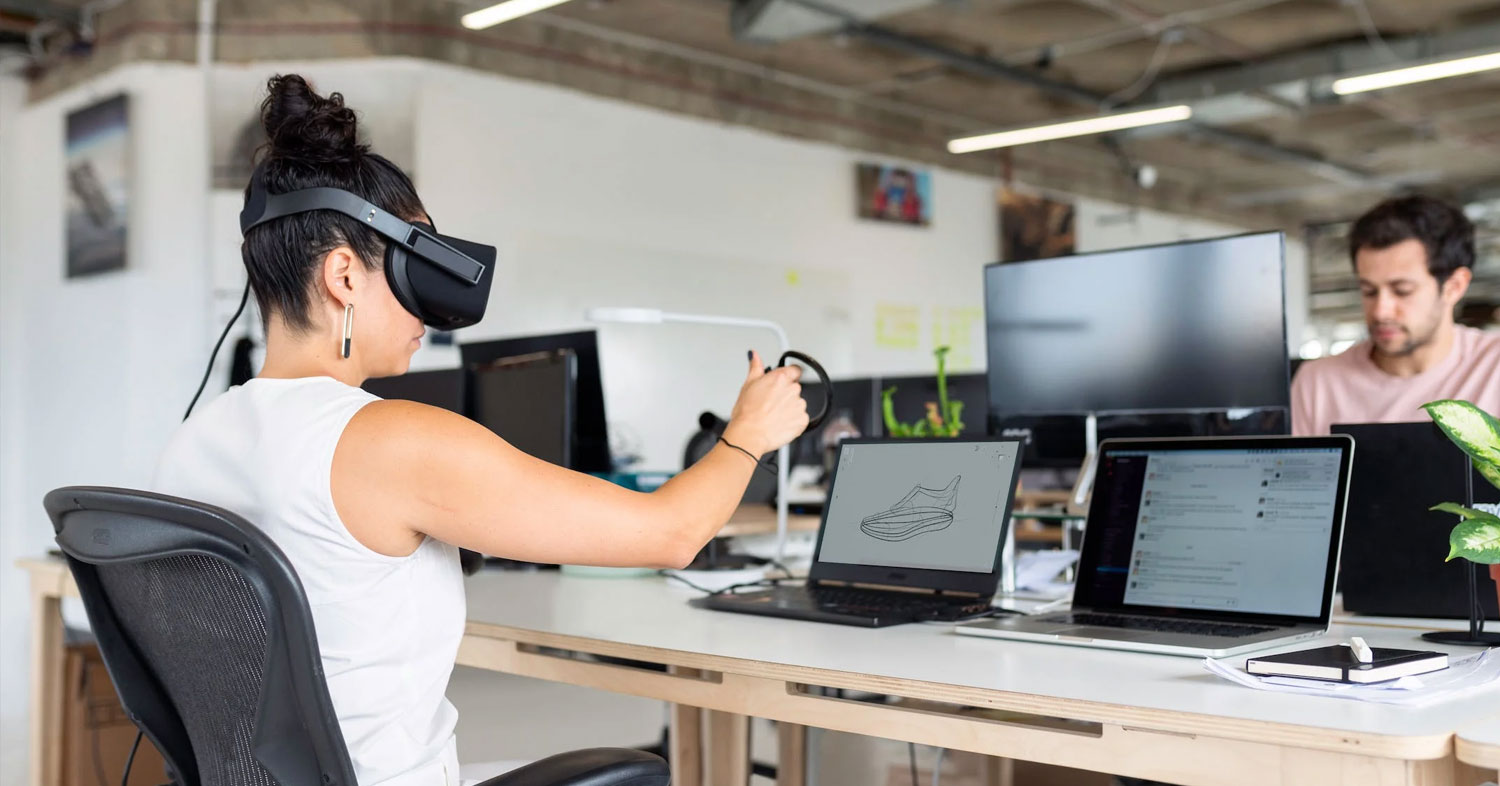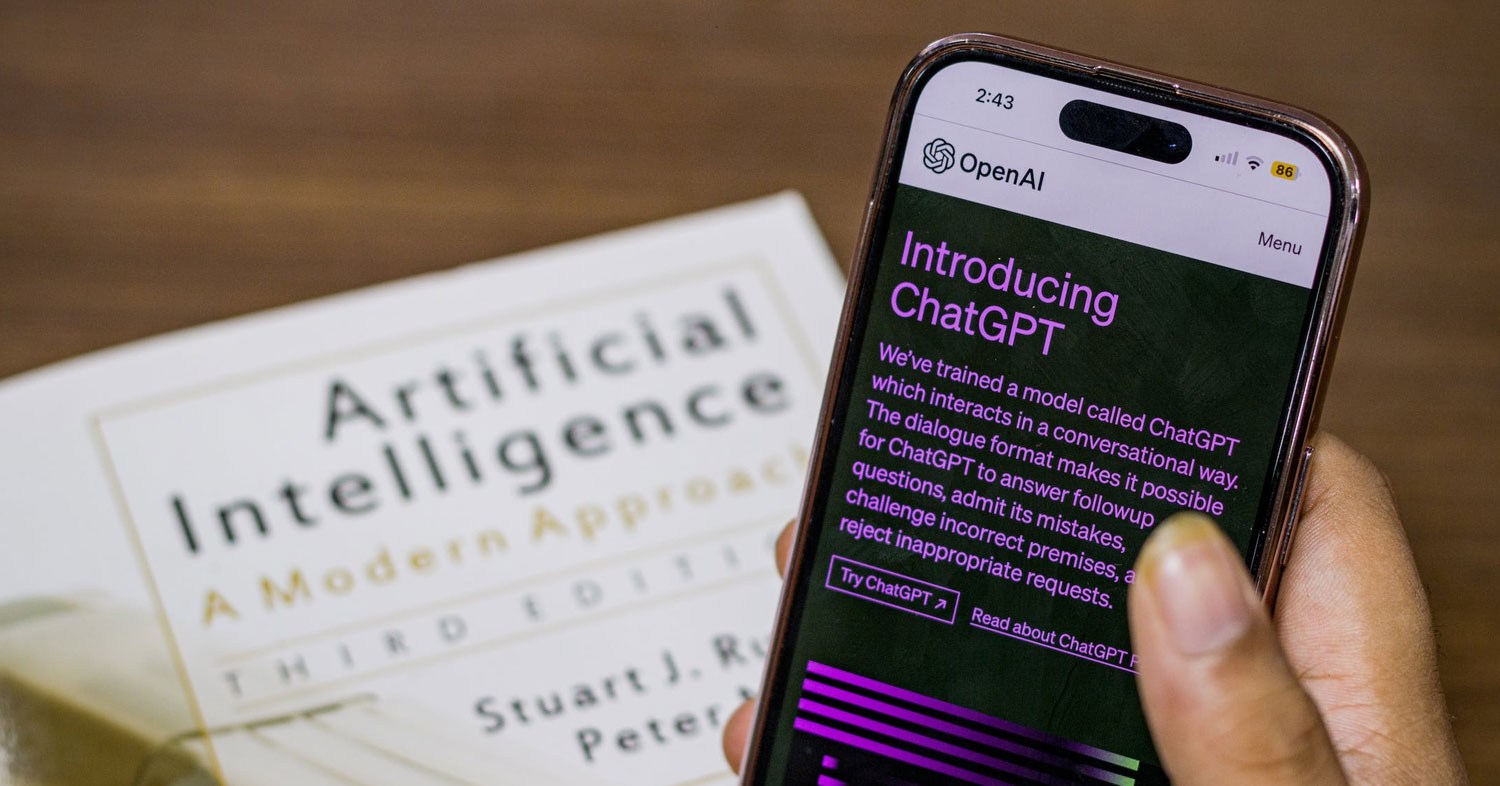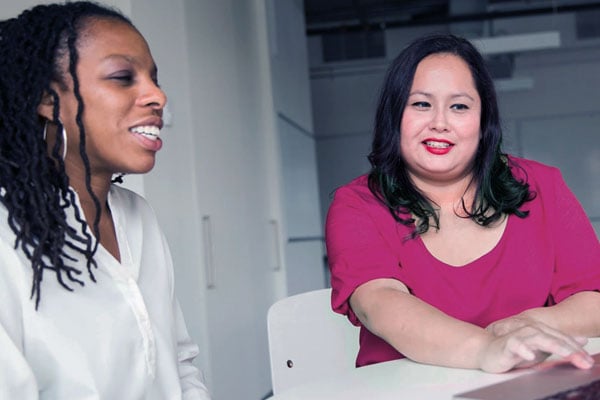
Predicting the future is always risky. We’ve all seen those hilarious retro-predictions of the future from decades ago that predict by 2023 we’ll be having holidays on the moon, personal robots doing our laundry and flying to work using jet-powered hover boots. So, making predictions does set you up for a fall.
But it can have some value. The current pace of change in the digital workplace is relentless and will be ever-increasing with the advance of generative AI and other innovations around the corner. In some ways the future of work is already here, and organisations need to keep an eye on what’s happening next to be ready for it and prioritise the right investments and interventions.
Scenario planning around a future vision for the digital workplace can be a great way to engage stakeholders to start the right conversations while also considering deeper strategies; it can help you to act now to build a better digital employee experience and seize competitive advantage.
The ever-evolving digital workplace
Changes in the digital workplace have been rapid over the last 15 to 20 years. We’ve seen the evolution of a digital workplace that is more mobile, social, personalised, integrated and immersive. At the same time there have been challenges where it feels progress has been slower, with some problems perennial and seemingly ingrained. These include findability, governance, user adoption, digital skills and more. So, while the technology, experience and toolset moves forward, the underlying challenges remain almost static, albeit relating to new circumstances.
In this post, we are going to explore some of the potential changes that we may see in the digital workplace and the accompanying digital employee experience over the next few years. However, we heavily caveat that these predictions may be wrong, so if you’re reading this post in 2033 and it’s wildly inaccurate, please don’t laugh! Technology and innovation continue to surprise us, which is one of the reasons we love working in this field.
Here’s our view on what the digital workplace of the future may be like.
1. More personalised
Any future digital workplace is likely to be more personalised around the individual user. Hyper-personalisation is the current direction of travel in our collective efforts to use data to present more relevant and effective digital workplaces, although often the theory is not proved by the execution.
Personalisation will likely be based around all the elements that shape it today such as role, location, and division, as well as user behaviour, individual preferences, membership of different groups and more. Machine learning should also help the system learn what content is likely to be of interest, both by taking into account user behaviour of the individual but also the collective behaviour and preferences of users with a similar profile. This should result in opportunities for laser-sharp content targeting but also the reduction of noise in content feeds.
The greater ability for users to also configure their digital workplace experience should mirror trends in the consumer space where the expectations of users is that an app or site knows them.
One critical factor in enabling this will be our ability to harness all the data that we have in a way that is more efficient and can navigate challenges around privacy and security, Technology providers should be aware of these constraints and provide necessary features for users to be able to control the use of the data.
The new hyper-personalised digital workplace should also provide multiple options of how the overall digital employee experience can be consumed with multiple front doors, for example through a browser, a mobile device, a desktop app or potentially even through an immersive experience like the Metaverse. Perhaps there will also be ways to navigate the digital workplace that are waiting to be discovered.

2. More intelligent
The new future digital workplace will also be more “intelligent” to help people work smarter, with capabilities intertwined with a more personalised experience, underpinned by Machine Learning. The digital workplace will be attuned to a user’s needs and be able to automatically configure experiences, deliver workflow, make content recommendations and issue nudges, that are relevant, timely, and valuable. This will be like having a highly effective digital assistant to help you through your working day, but instead of a single app, it will be one that is threaded through every application. It will also be predictive, anticipating things that you need or outlining different options to follow.
A more intelligent workplace should also deliver much better search and findability, again personalised to your experience. This is one area where the conversational UI found in a platform like ChatGPT could be the standard interface for finding sources, but also delivering answers to questions that are found within those sources.
3. More efficient
A more intelligent digital workplace should also be a more efficient workplace. It will help people get things done at scale, right across the organisation, supercharging productivity. We’re already seeing tantalising glimpses of what ChatGPT is capable of with the ability to understand and respond to detailed instructions.
What we can do in the future should help to eliminate repetitive and dull tasks; organising complicated meetings across time zones, constructing and delivering complicated workflows to order, booking flights and travel, generating a custom contract; all these are tasks that the future digital workplace should be able to help us with through advanced automation.
4. More accessible
We think that the future digital workplace will be more accessible for every user, wherever they happen to be. Greater support for the digital workplace on any device as well as the faster connectivity everywhere enabled by 5G and beyond should enable access for the entire workforce.
We would also hope that the future digital workplace will also be more accessible for people living with disabilities. Large tech providers have made progress in making tools more accessible, although we still have to long way to go for everything to comply with the WCAG 2.2 guidelines. However, we should expect there to be better accessibility threaded through the digital employee experience, especially with greater awareness of disabilities, some of which aren’t necessarily visible.
5. More immersive
You will undoubtedly will have read predications about the Metaverse and our ability to meet in 3D spaces using avatars, leveraging elements of virtual and augmented reality. This is certainly the direction of travel for some tech providers, and it seems likely that the future digital workplace will be more immersive. We may well be able to do that virtual presentation where we appear as a hologram on somebody’s desk or have “water cooler conversations” as avatars in exotic but virtual locations. More immersive experiences could also be applied to more conventional forms of communication such as video conferencing.

What remains to be seen is when (and quite possibly if) this will actually happen. There is currently a disconnect between the demand for these services and the importance placed on them by tech vendors. But as the demographic inside companies changes to a younger generation more used to gaming and as the technology itself progresses, the evolution of the Metaverse and associated experiences could happen more quicky than expected.
6. More environmentally friendly
To date, the environmental impact of the digital workplace has tended to be viewed in a positive light because of the reduction in carbon footprint it enables through eliminating the need to travel or our reliance on offices. But as the environmental crisis deepens and regulations around reporting become formalised, the impact on the environment of technology investments is going to start to be a factor in decision-making. For example, we know that data centres can have a significant negative impact.
Given all these pressures, we think that the digital workplace of the future will attempt to be more environmentally friendly, by at least being able to report on the impact. For example, could a user at the end of the day be able to tell exactly how much they have contributed to a carbon footprint through their technology use during that working day? It might be like a smart energy meter for the digital workplace. Having said this, a future digital workplace based on huge amounts of data and the Metaverse may require huge processing power, and that may mean a higher carbon footprint.
7. More complex for users
Of course, while all of the elements we’ve covered so far are positive, we think the future digital workplace will have more than a few issues.
The experience is likely to be more complex for users. There’s going to be more options around tools and more features within these, although what you can achieve with these tools will be greater. And with the pace of transformation increasingly exponential, there will be continual changes to these tools and features. The chance of information overload and being overwhelmed are high as digital workplace evolution outpaces the ability and time that users have to learn about new tools and how to actually use them.
Digital workplace teams have an important role in trying to enable a coordinated and consistent experience that avoids these issues, while also supporting digital literacy and increasing new digital skills. But that is going to be a big ask. We can already see this with ChatGPT which ideally needs user training on how to best interrogate it; the future digital workplace could get increasingly complex for everyone.

8. More challenging to manage
The future digital workplace is also going to be more challenging to manage. Besides more support for users, it will require more governance and foundational work to minimise risks and enable value. Digital workplace teams will also have their work cut out continually launching increasingly complex tools.
As separate teams and even individual users can create new apps and services, there will need to be guard rails in place around privacy, cyber security, intellectual property, wellbeing and ethics. Digital workplace teams are in a great position to make a huge contribution in this area, but we think managing the digital workplace will be far from straightforward.
Why it helps to think about the future digital workplace
Thinking about the digital workplace of the future is a worthwhile exercise. It helps capture the imagination of senior stakeholders and gets them excited about the future potential. It can also help you to start making the right decisions in the present to enable the future digital workplace.
In considering the future digital workplace it makes sense to try and envisage what it looks like specifically for you and your employees. What kind of future experience do you want to achieve? What are the current pain points that you want to eliminate? Where are the areas that innovation will take place, for example in your manufacturing plant or across your customer service team? Considering these sorts of questions will help you develop your own vision for a future digital workplace.
If you’d like to discuss your future digital workplace, or your current one, then get in touch!

Find out more about digital workplace services...
Request a call back with one of our digital workplace experts, for a free consultation about your business.




